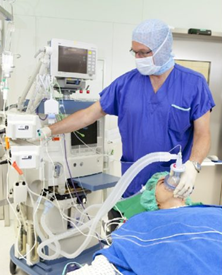EH&S has developed a new document Anesthetic Gases: Safe Use Guidelines and an Anesthetic Gases webpage to help users of anesthetic gases understand the potential health effects from exposure to anesthetic gases, and to provide guidance on minimizing potential exposures. These gases can be separated into two categories: Halogenated anesthetic gases/vapors and nitrous oxide. These may be administered in combination to produce surgical levels of anesthesia. Workers who may be affected include clinical workers in medical and dental care settings, and workers in animal research environments.

Anesthetic gases and vapors that leak into the surrounding room are considered waste anesthetic gases (WAGs). If equipment is not set up or functioning properly, or if the WAG is not properly exhausted or captured via scavenging, or ventilation not adequate, healthcare workers, researchers, and veterinary staff may be exposed to WAGs. This exposure creates a risk of potentially developing adverse health effects.
Some of the health effects from exposure to nitrous oxide and the halogenated anesthetic gases include short-term effects such as headache, nausea, and shortness of breath; and long-term effects including reproductive effects, and liver and kidney disease. Fortunately, it’s possible to control these exposures in the workplace through a variety of measures, which are detailed in the new guidelines.
For more information consult the document Anesthetic Gases: Safe Use Guidelines or contact EH&S at 206.543.7262 or ehsdept@uw.edu.